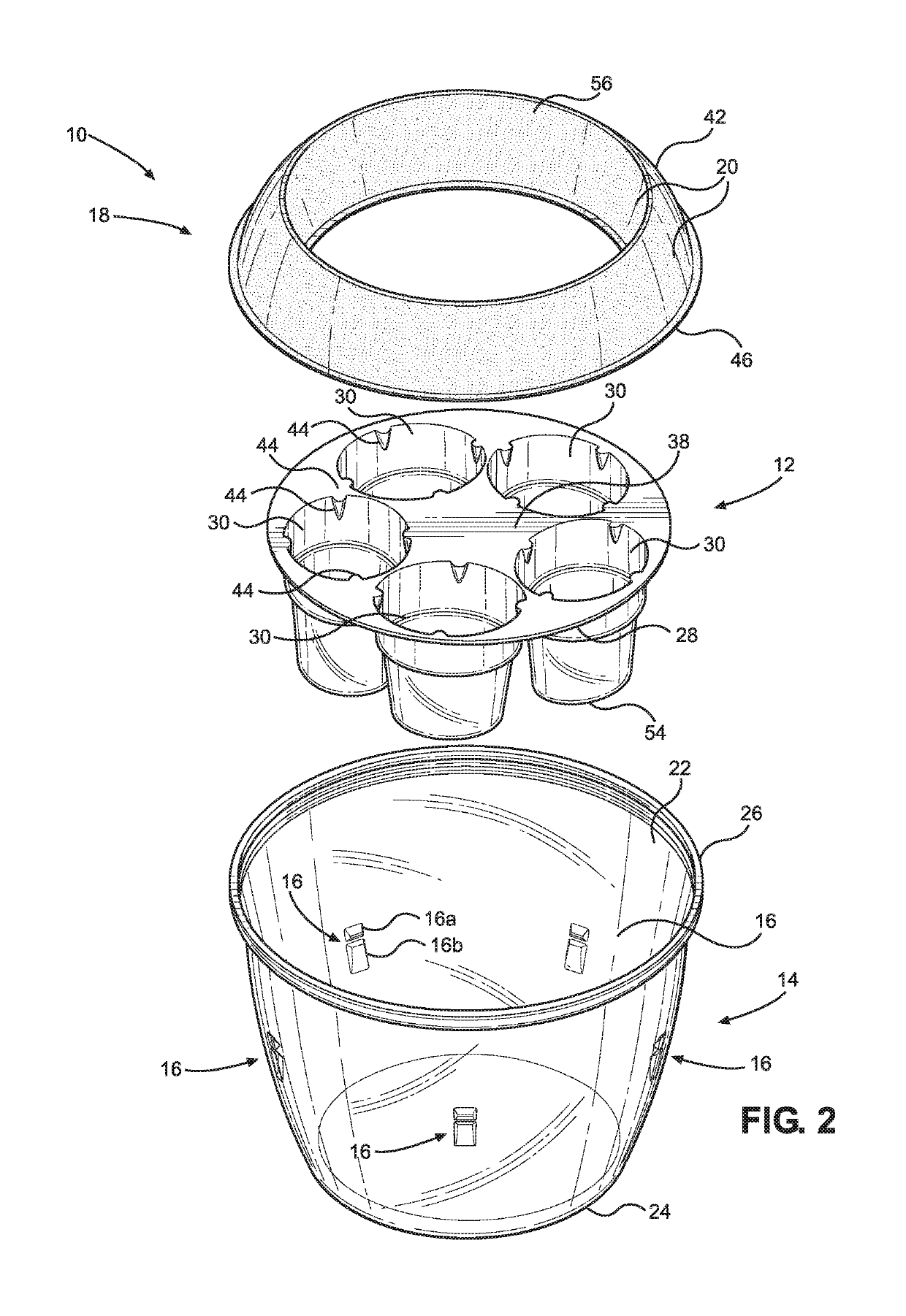Hydroponic display container for flowering bulbs
a technology for flowering bulbs and display containers, which is applied in the field of hydroponic flowering bulbs growing, can solve the problems of hydroponically grown flowers that are particularly vulnerable, damage to plants, and fragile root systems,
- Summary
- Abstract
- Description
- Claims
- Application Information
AI Technical Summary
Benefits of technology
Problems solved by technology
Method used
Image
Examples
Embodiment Construction
[0027]The preferred embodiment in FIG. 1 shows an exemplary assembly of the hydroponic container 10 of the present disclosure. As shown in FIG. 2, a support device 12 used for containing flowering bulbs is inserted into a transparent plastic pot 14. The transparent pot 14 includes sets of laterally extending flanges 16 to establish an interference-fit or press-fit, also termed a snap-fit arrangement with the support device 12. The support device 12 may be inserted into the transparent pot 14. The flower bulbs can continue their growth in the support device 12 and emerge from a top opening 56 of a snap-fit cover 18. The snap-fit cover 18 creates a substantially watertight seal 52 where it is joined with the transparent pot 14. As shown in FIG. 1, the downwardly extending sidewalls 20 of the snap-fit cover 18 will also provide support to the stems of the maturing flower bulbs. The combination of these components creates an innovative device for transporting, storing and displaying hyd...
PUM
 Login to View More
Login to View More Abstract
Description
Claims
Application Information
 Login to View More
Login to View More - R&D
- Intellectual Property
- Life Sciences
- Materials
- Tech Scout
- Unparalleled Data Quality
- Higher Quality Content
- 60% Fewer Hallucinations
Browse by: Latest US Patents, China's latest patents, Technical Efficacy Thesaurus, Application Domain, Technology Topic, Popular Technical Reports.
© 2025 PatSnap. All rights reserved.Legal|Privacy policy|Modern Slavery Act Transparency Statement|Sitemap|About US| Contact US: help@patsnap.com



